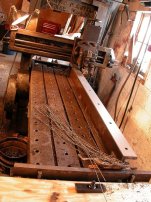So I've been looking at all these pic's of real cool planers & got to wondering . Were the planers made as a result of the early steel's not being as refined in size/dimensions as the steel's we have today ? I'm kinda guessing on that due to the face that you don't really see planers in many shops today , or at least teh shops I have been in .
thanks
animal
thanks
animal




